A Peek Inside the Dreamiest Modern Edible Garden
Jen Pucillo's Portland, Oregon garden is a decade in the making and a shining example of just how beautiful edible landscapes can be.
Hello, hello! I am so excited to share my first garden tour for The Garden Dish! Earlier this spring I did a presentation on delicious vegetable varieties for the Multnomah County Master Gardeners and at the end I asked people to let me know about any amazing gardens I should know about (including their own). The next day Jen Pucillo got in touch and when she sent me photos of her garden, I recognized it! It turns out that Jen lives just down the hill from me and I had admired her garden while out walking my dog! It’s a stunning space and a great story that shows beautiful gardens come from a combination of patience, trial and error, and a genuine love of plants!
A riot of plants greets visitors at Jen Pucillo’s home in a quiet Portland, Oregon neighborhood. Lavender, rosemary, and drought-tolerant perennials spill out onto the sidewalk. The front yard—once an expanse of grass—now features a prominent vegetable garden, with sturdy, black-stained wooden raised beds. It’s the type of garden that causes walkers-by to slow their step and smell the jasmine growing in a happy jumble along the fence.
When Jen and her husband purchased their home in 2012 it featured no vegetables, a giant row of arborvitae, an enormous backyard deck, and a long list of projects inside that first demanded their attention. It wasn’t until 2015 that the couple turned their eyes towards the yard, which is in USDA Hardiness Zone 8b.
“Before we started doing any landscaping, I looked at our plot of land and how the house is situated. It is very rectilinear—we've got these square and rectangle spaces,” explains Jen, who is an interior designer by trade. “When I started the design and layout process, I experimented with putting in curves to soften things up, but they just never felt right. Trying to force the curves in felt like we were going against the kind of architecture that was already here. So I decided to just enhance and embrace the rigidity of that and let the plants be the softness.”
Jen worked at a garden center in college and with her design background she felt confident about drafting the layout of the garden, but she decided to hire a landscape designer to help think through implementing the garden. “We did not have the budget to have someone build out the garden. We have done all of the labor ourselves—building the raised beds and deck, hauling the gravel, and planting every plant—but I decided to work with someone who could be a mentor and a guide on how to phase in the garden plantings.”
Step one was borrowing a chainsaw and getting rid of the huge hedge of arborvitae that separated their side yard from the neighbors. “With the arborvitae gone, we had no privacy. So the question was, “How do we build in privacy?,” explains Jen. The answer: evergreen jasmine. “Jasmine was huge on my list of plants I wanted in the garden. I studied and lived in Italy for a period of time, and jasmine was everywhere. It feels so glamorous to me.” So out went the arborvitae and in went the jasmine.
She then planted some camellias and blueberries, which both died. “I’ve definitely had some failures,” Jen laughs. “It was both me figuring out the right plant for the right place and the right care.” Now, nearly a decade in, the narrow side yard is decidedly more than just a shady pathway between the front and back yards—it’s a garden with a fragrant backdrop of glossy green jasmine and a perennial border punctuated with roses, peonies, astilbe, ferns, hebe, and catmint.
Next up on the project list was the front yard vegetable garden and rethinking the backyard, which was mostly consumed by a giant deck. As part of the exterior refresh, the couple painted their house dark grey with a pink front door that draws the eye towards the entrance. The vegetable garden sits in the long rectangular spaces at the front of the house and next to the driveway. Jen made the decision to stain the raised beds for the vegetable garden using the sustainable Eco-Stain in Ebony for the outside and a zero-VOC, non-toxic internal wood stabilizer on the inside to increase the bed’s longevity.
“We painted our house really dark because I knew at some point we were going to have all these vibrant plants,” she says. “And I love the idea of having anything that's built in the garden—like raised beds or trellises or pathways—designed to recede so your eyes are drawn to the plants.”
Even though the front yard faces north, it gets tons of sun. “I love Monty Don [of BBC Gardeners’ World fame],” she says. “I really came to learn a lot about vegetable gardening in my adult life from him. Especially seeing that you can have vegetables in your front yard. You don't have to hide them. Watching his show kind of gave me permission to grow my vegetables where I need to grow them.”
The front yard vegetable garden features three raised beds to the left of the driveway—which Jen is growing cannellini beans in this year—and five large beds in the former lawn. A border of ornamental and edible plants disguises the chainlink fence that runs along the property line. A raspberry patch—with heirloom plants transplanted from her husband’s grandfather’s raspberry plot—anchors the border, which also features an olive tree, a strawberry guava and a profusion of chartreuse, purple, and sage grey plants, including lemon thyme, salvias, and ‘Lemon Fizz’ santolina.
Jen likes to experiment with squeezing as many vegetables into her raised beds as possible. When I visited in late May ‘Shintokiwa’, ‘True Lemon’, ‘Armenian’, ‘Addis’ and ‘Suyo Long’ cucumbers were just beginning to twine their way up a wire trellis underplanted with salad greens. The large black trellis at the center of the garden houses over a dozen tomatoes interplanted with peas, zinnias, and nasturtiums. A row of ‘Amarosa’ and ‘Caribe’ potatoes ran down the center of one bed with fava beans on either side, “This is an experiment,” concedes Jen. “I hope the potatoes get enough sun now that the favas are growing up. We will see!”
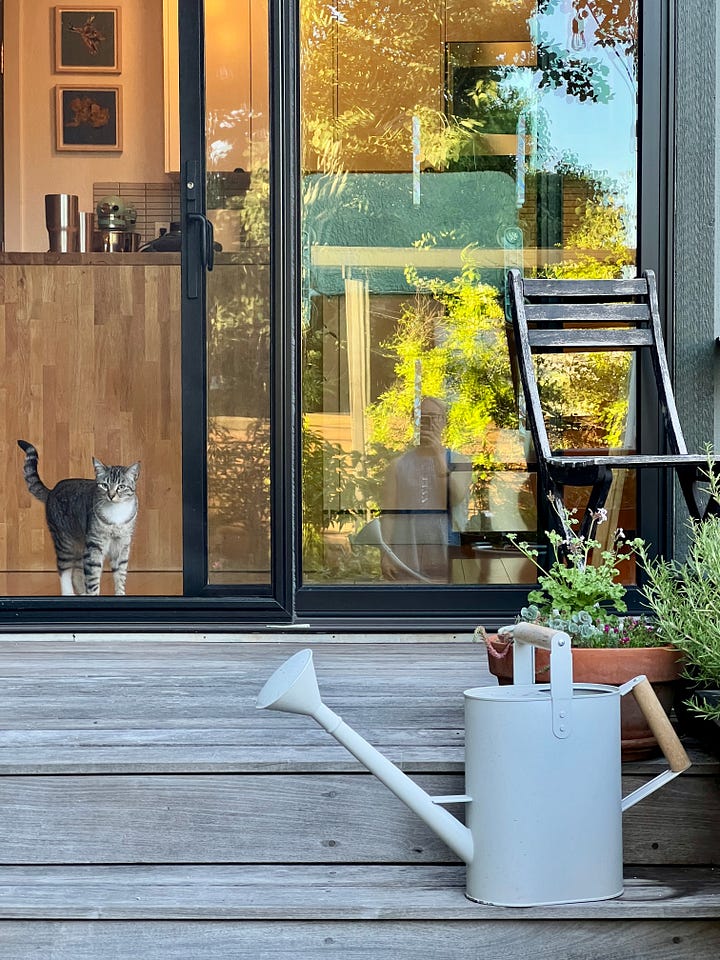
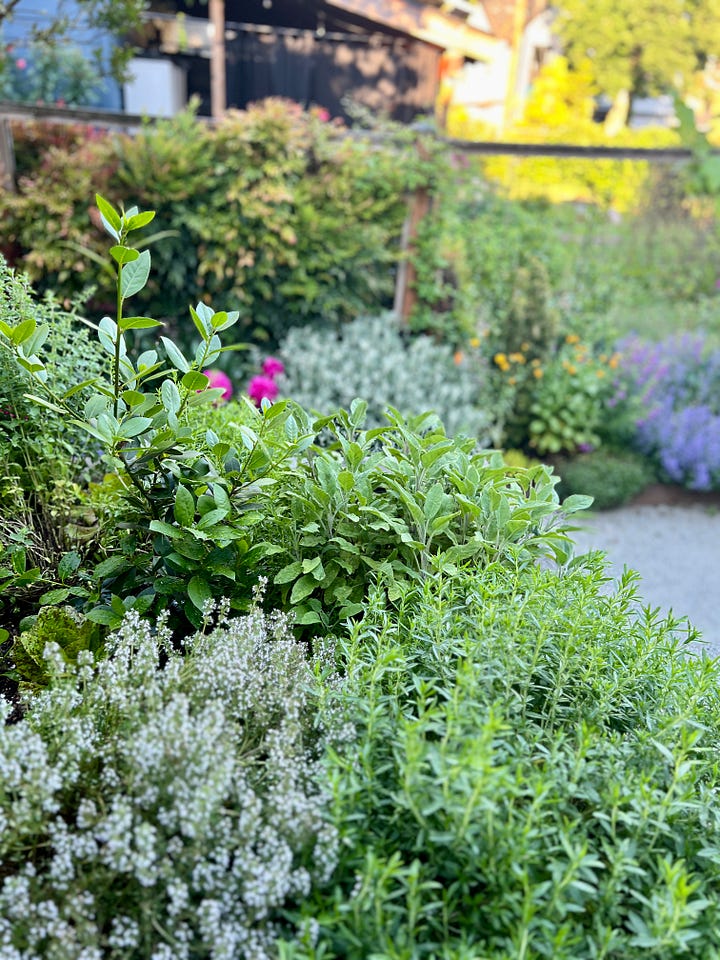
In the backyard, in the space that once was the giant deck, there’s now a crushed gravel patio with twinkling party lights strung above. The redesigned (and much more petite!) deck acts almost like a balcony. A cafe table sits right outside the sliding kitchen door—perfect for enjoying a cup of coffee in the morning while surveying the garden. A smartly situated herb garden anchors the outside corner of the small deck and a set of steps leads down into the patio, which features a cozy dining area and a pair of lounge chairs. The perennial beds lining the patio are edged with corten steel—a durable material that develops a rusty patina as it ages. Edible and ornamental plants mingle together in the border, with a grape vine and clematis weaving through the fence, and potted figs, strawberries and herbs ornamenting the patio.
The garden is both perfection and a work in progress at the same time. Jen has plans for a greenhouse and compost area, but in the meantime she’s trying to enjoy what she’s created. “I’m constantly in motion,” she admits. “Something I’m really trying to do is learn how to enjoy the moment I’m in, especially in the garden, because it looks different with every season, with every day and I don’t want to miss it.”
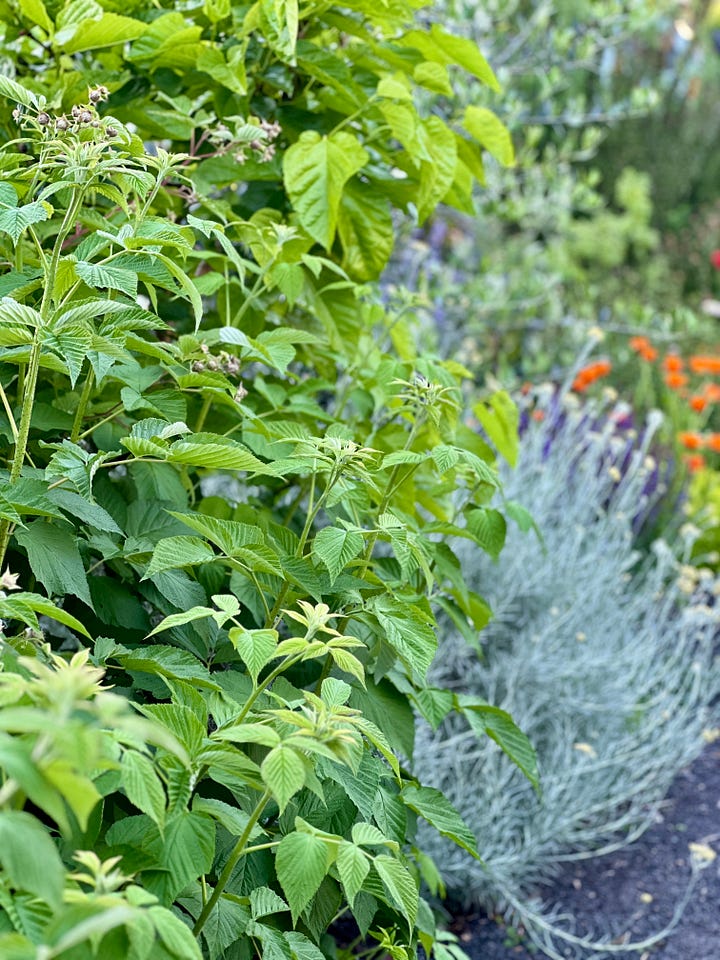
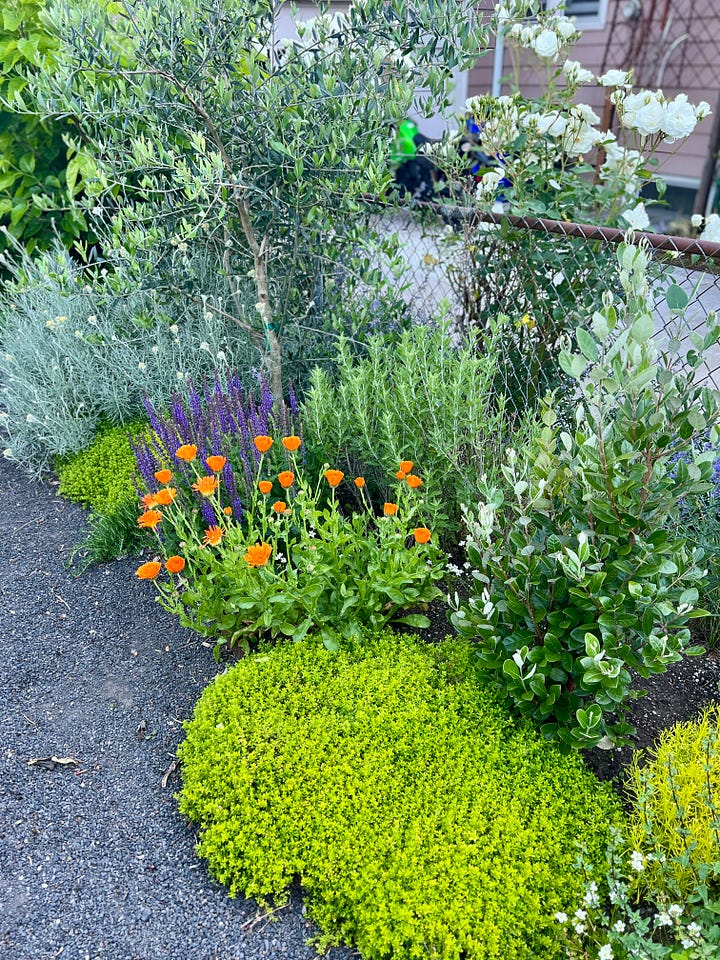
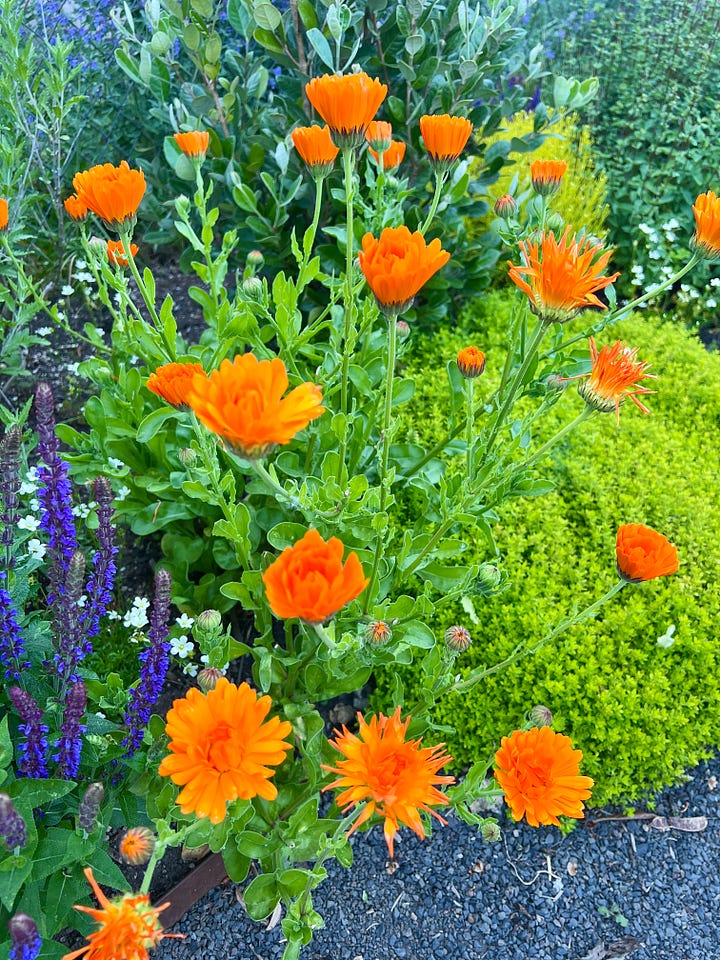
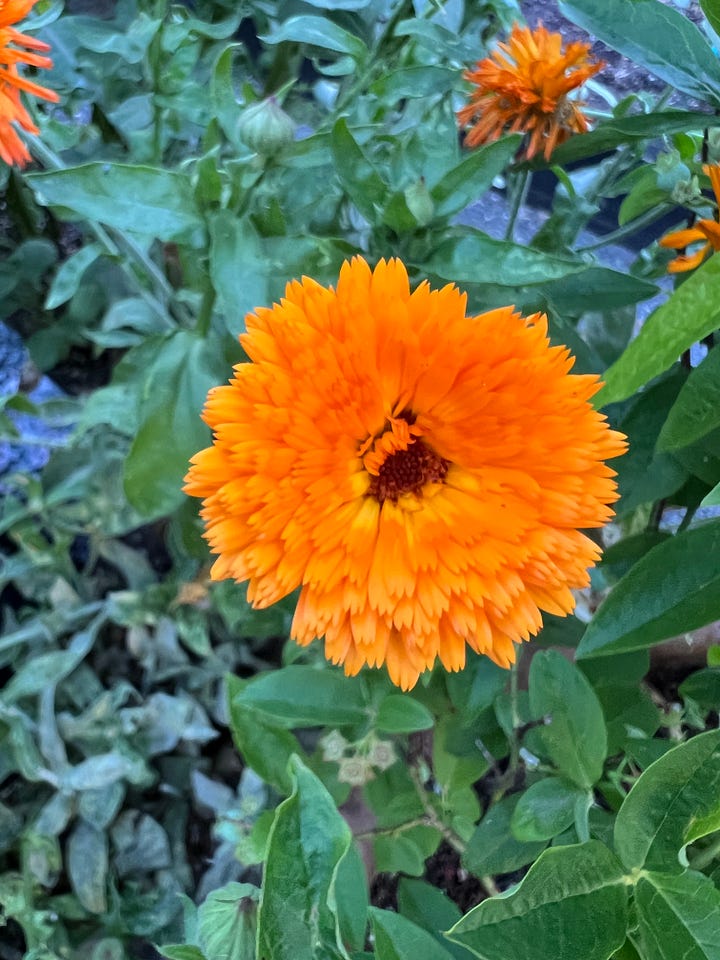
“Calendula is one of my most favorite plants. It’s the hit of orange you see throughout the garden. I really gravitate towards strong acid, fluorescent colors, with a lot of green as the background. That’s kind of my planting go-to.” Jen dries the flower heads and makes her own skin balm with a homemade calendula oil.
“My most favorite gardening tool is my Hori Hori. It is the single item that I reach for every time I'm in the garden.” This versatile tool digs, cuts, lifts and scrapes, making it ideal for digging, weeding, and transplanting.
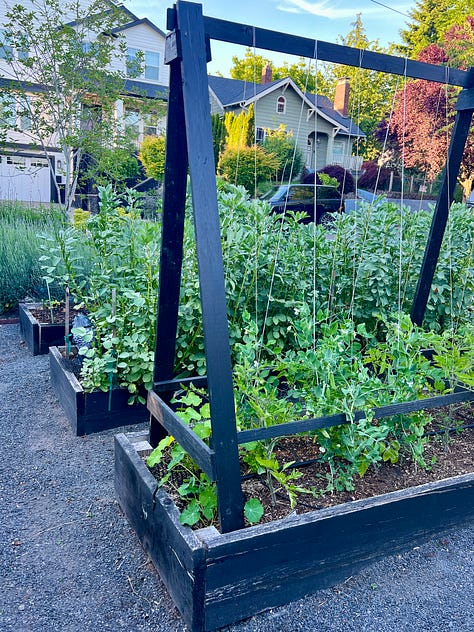

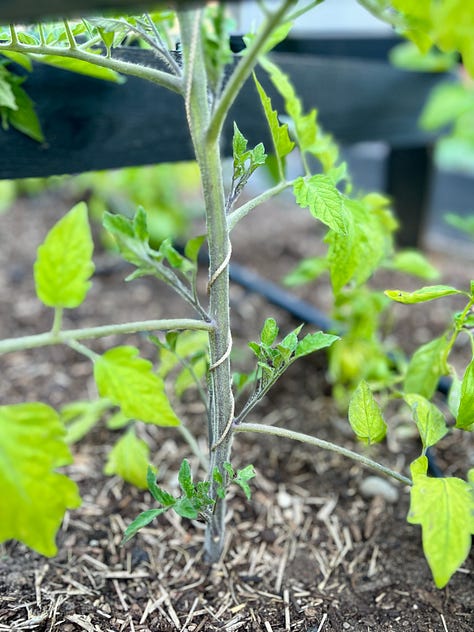
Jen starts her tomatoes indoors under lights in late winter and gravitates towards Italian varieties and paste tomatoes that can well. This year she’s growing ‘Sweet Prince’, ‘Stupice’, ‘Cuor di Bue Albengo’, ‘Saucey’, ‘Flaschetto di Manduria’, and ‘Captain Lucky’. She manages to grow a dozen tomato plants in a single bed by training the tomatoes up twine. A taut piece of jute twine is strung from the top of the tall, sturdy trellis to the base of each plant. You can either bury the twine at the bottom of the planting hole when you plant the seedling or loosely tie it to the plant’s bottom. This trellising method requires frequent maintenance—you need to pinch off all suckers and train the twine around the stem every day—but it results in less bushy plants that focus their energy on producing (and ripening!) the fruit.
It’s always fun to see how a garden has changed! Thanks to Jen for sharing these photos of her home before the garden magic began!
I am thrilled you are here! If you’d like to get future issues of The Garden Dish, please subscribe. It’s a wonderful small (but growing!) community of people who love to cultivate and tend the world around them and I am thankful you are here. And please do share the newsletter with anyone you think might also enjoy it :)





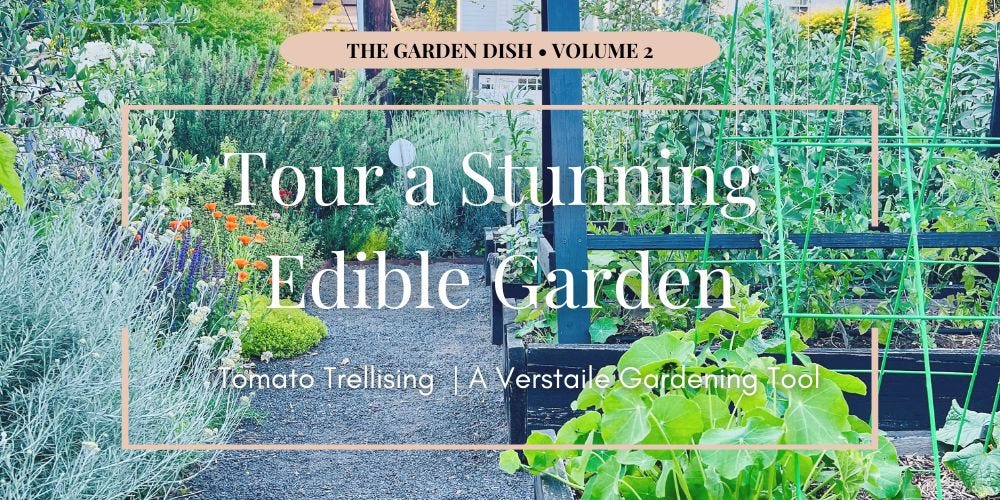

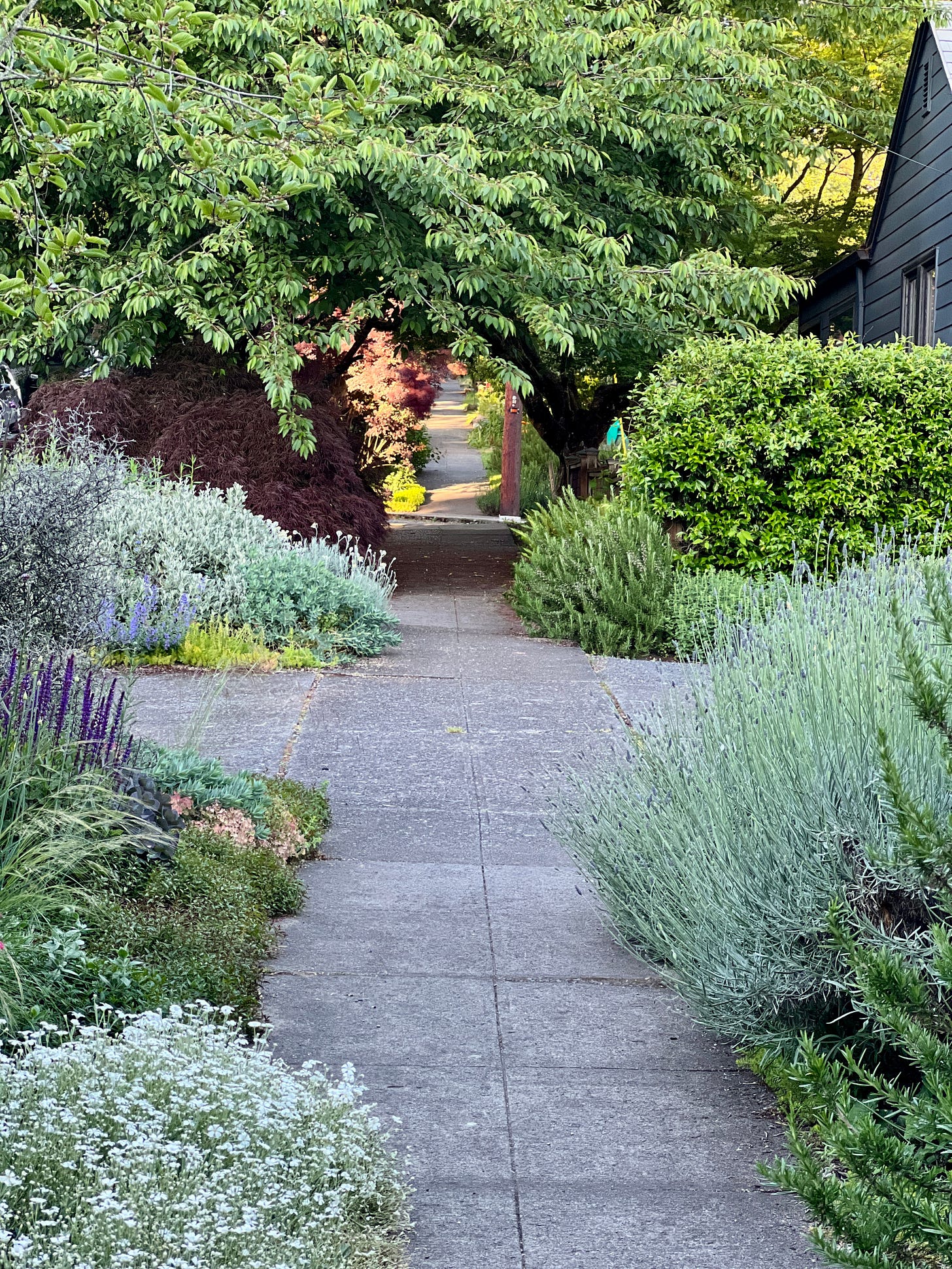
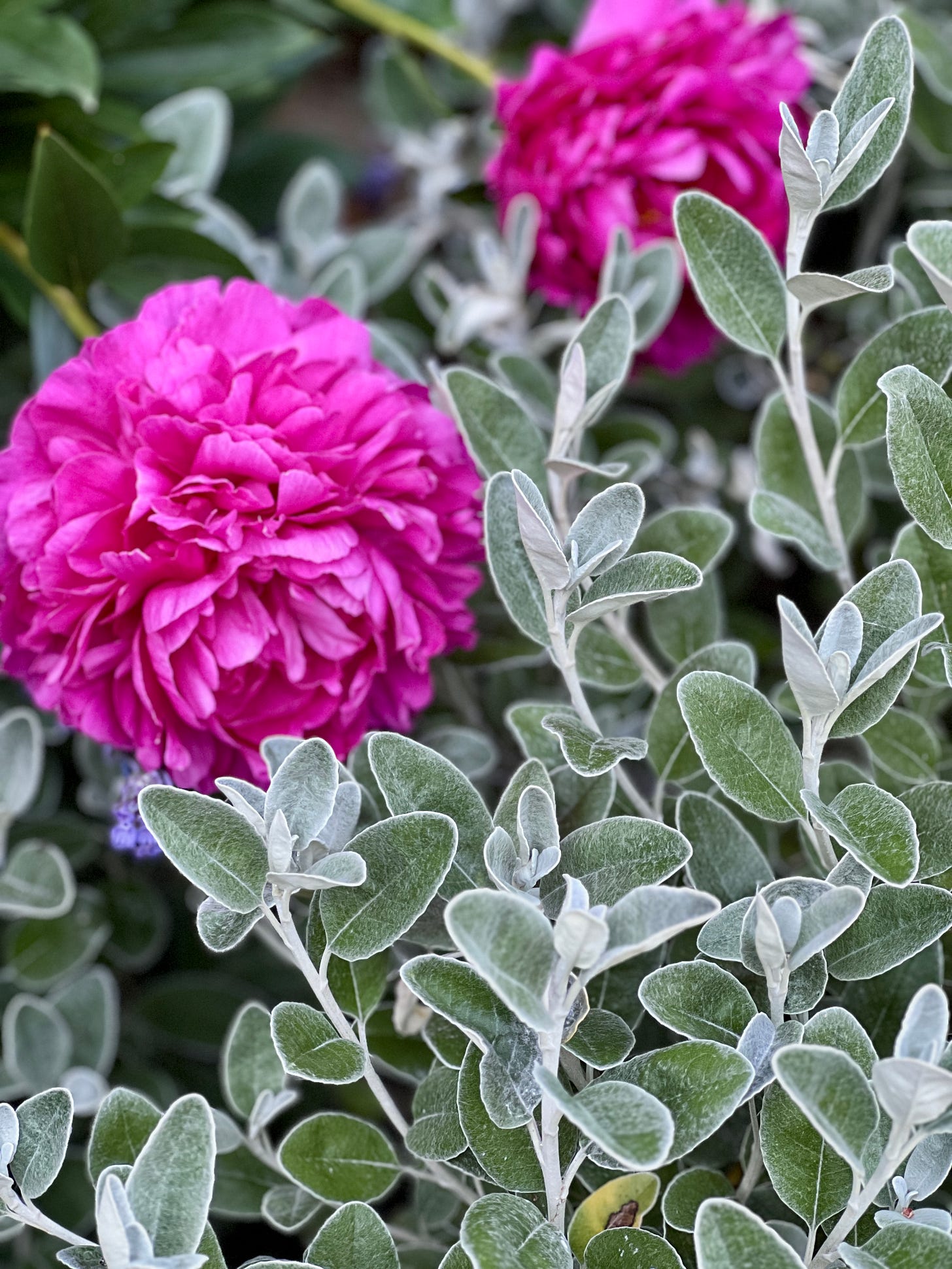
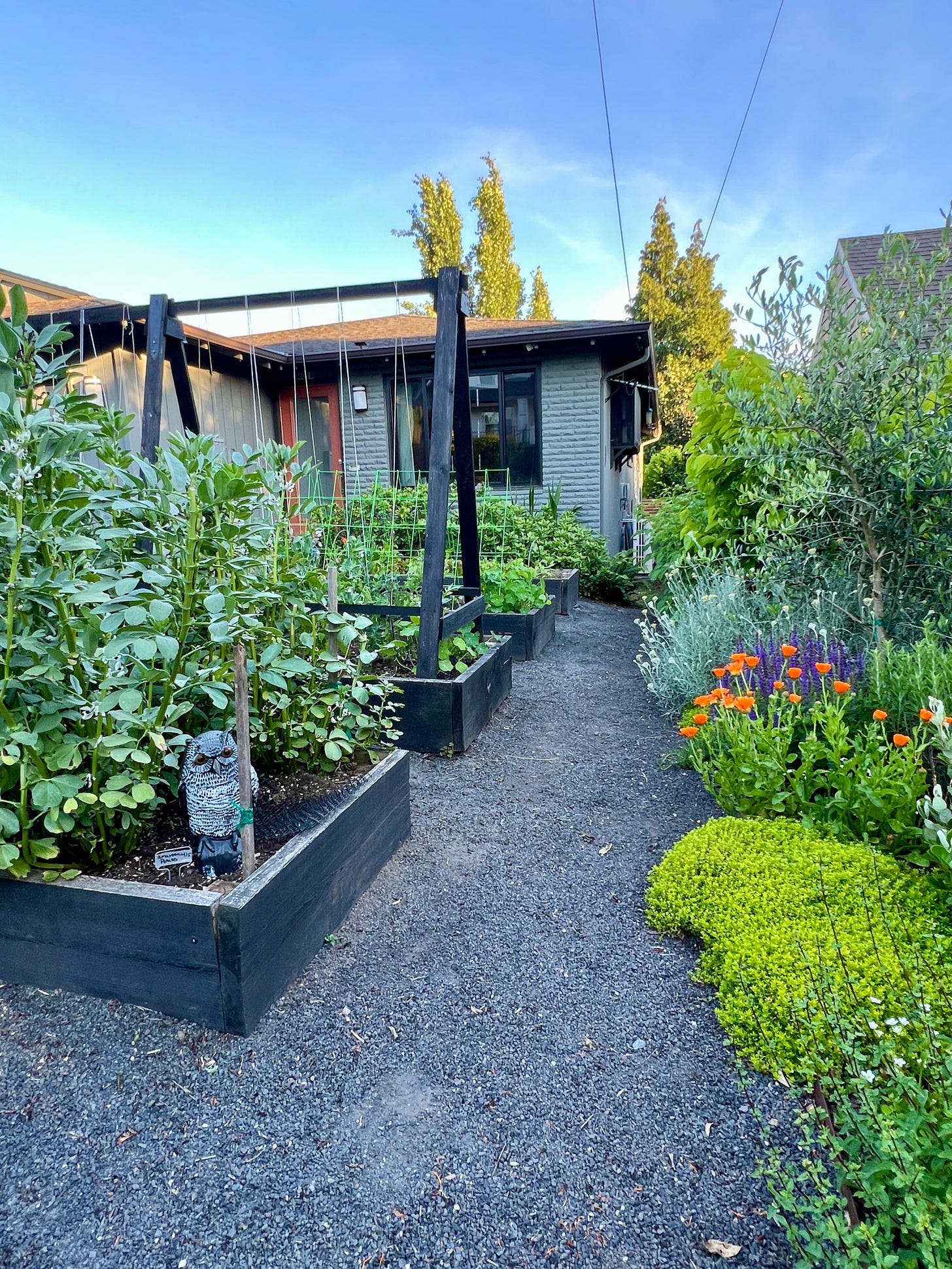
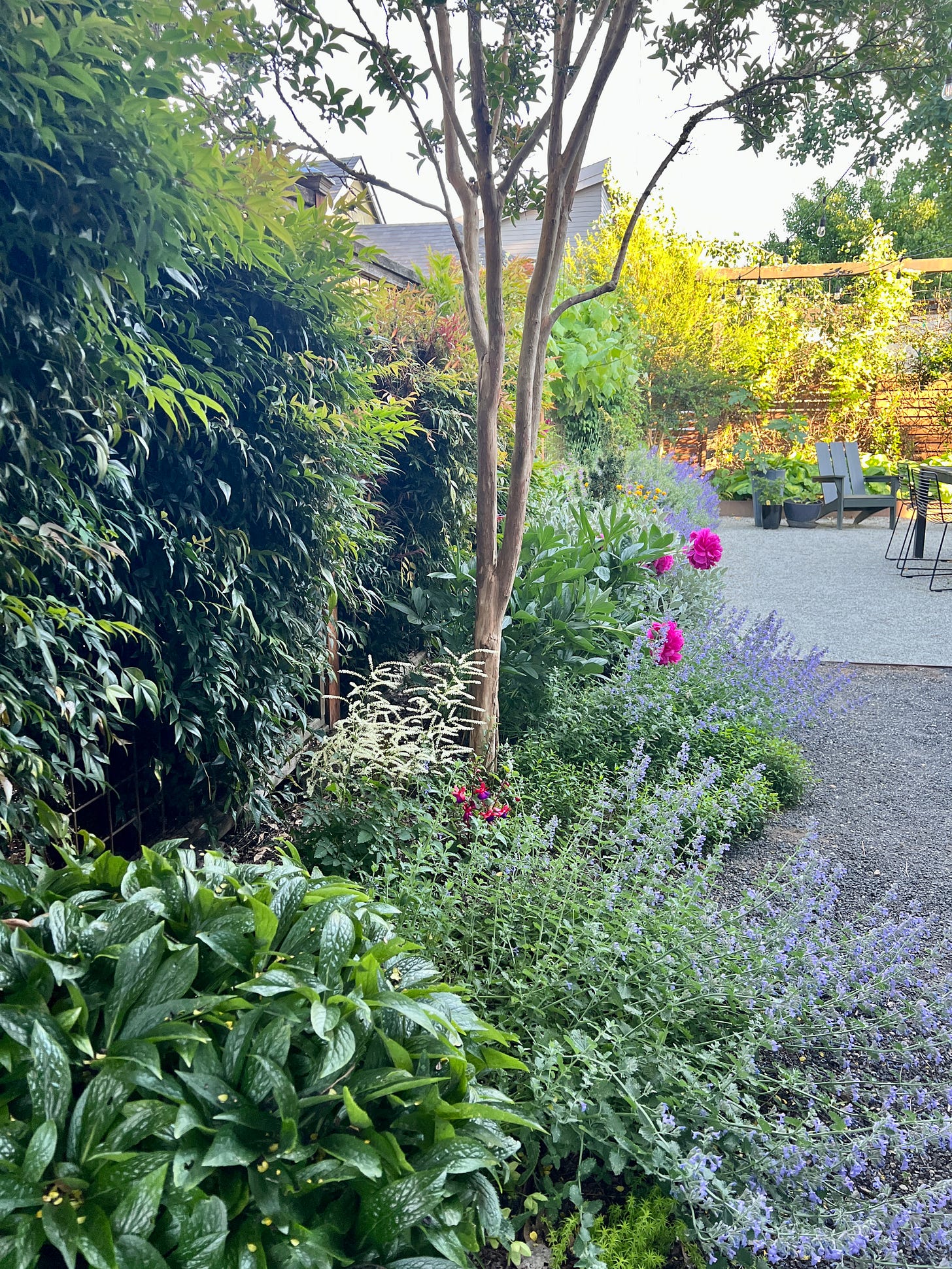
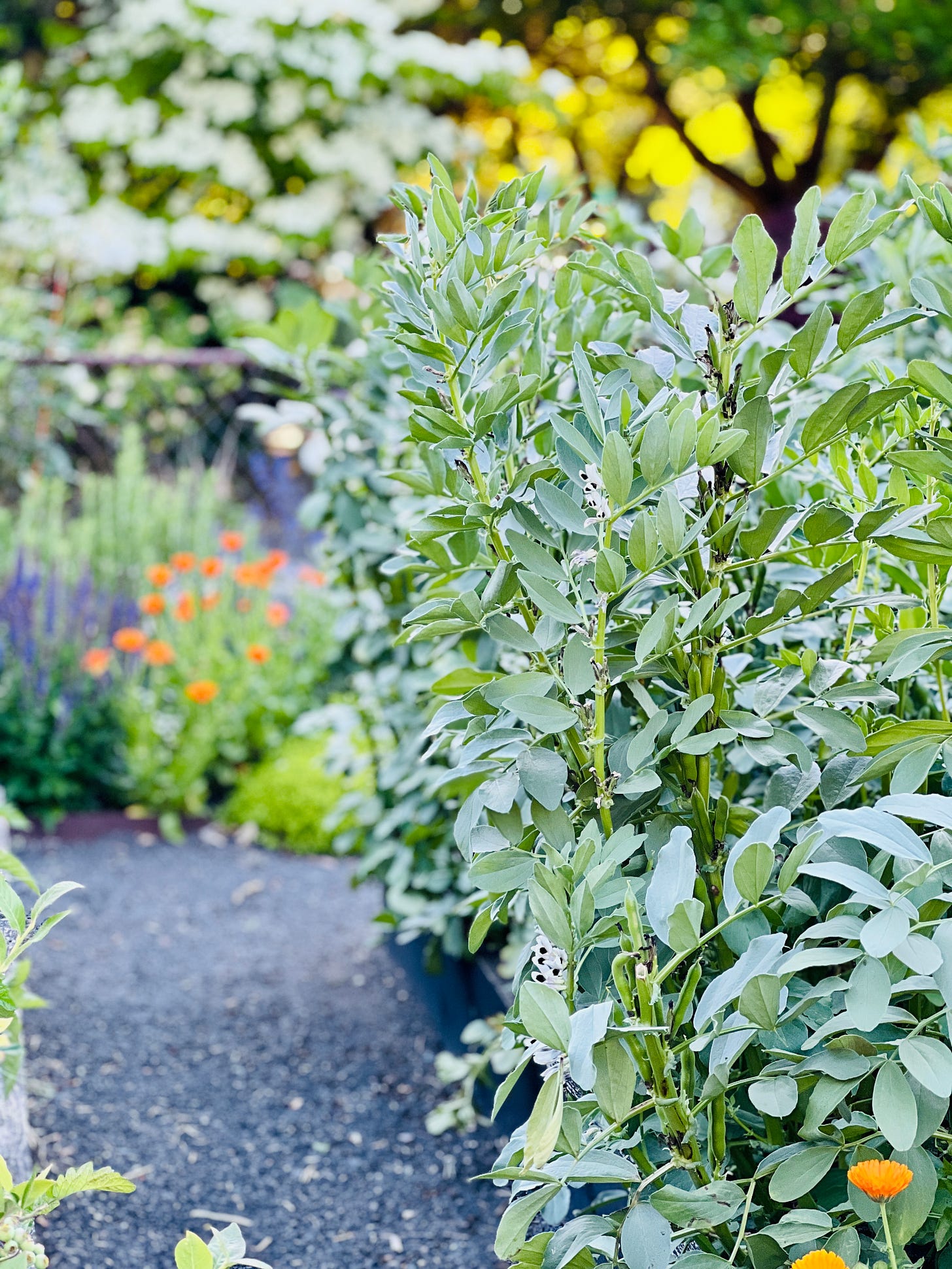

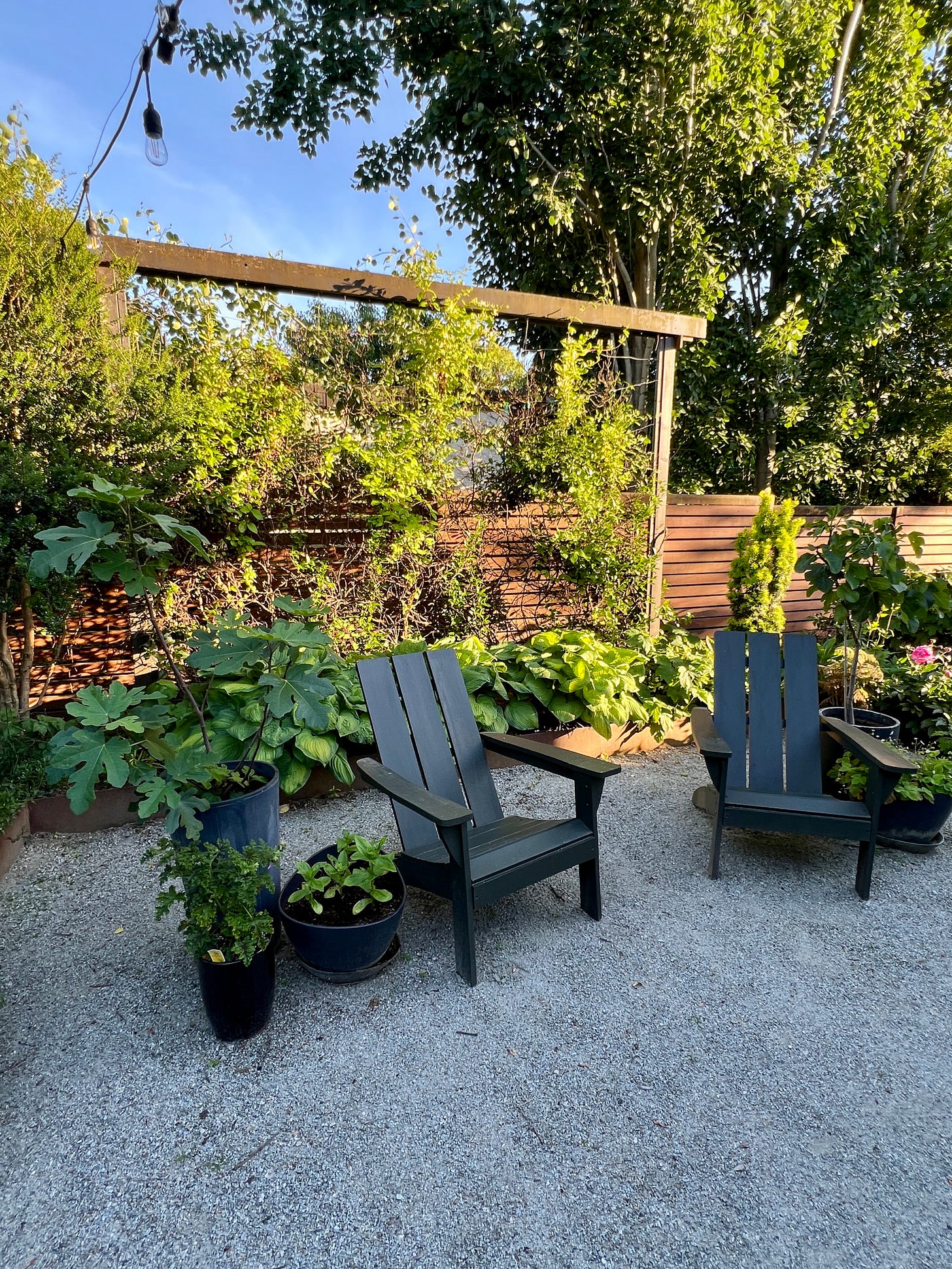
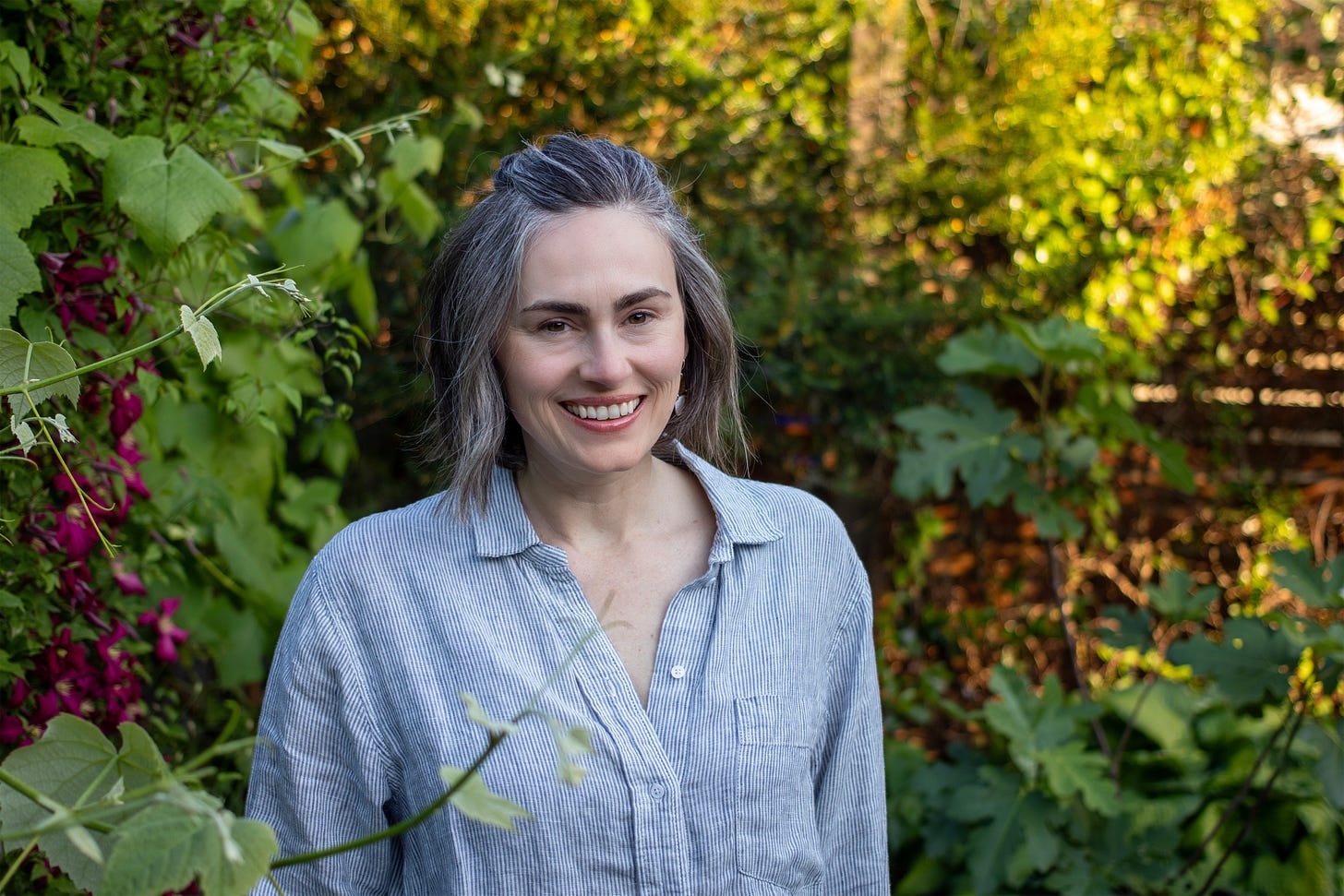


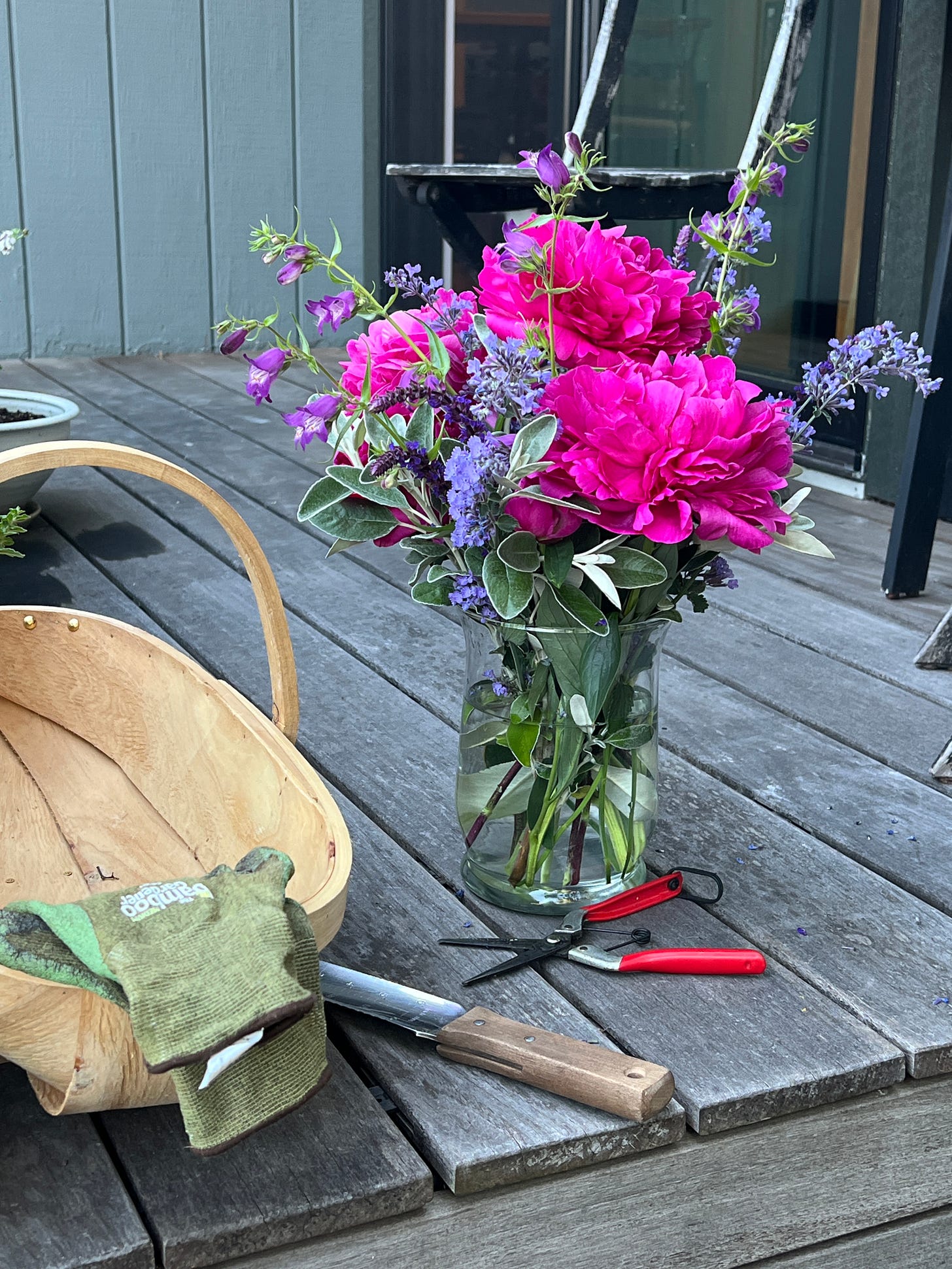



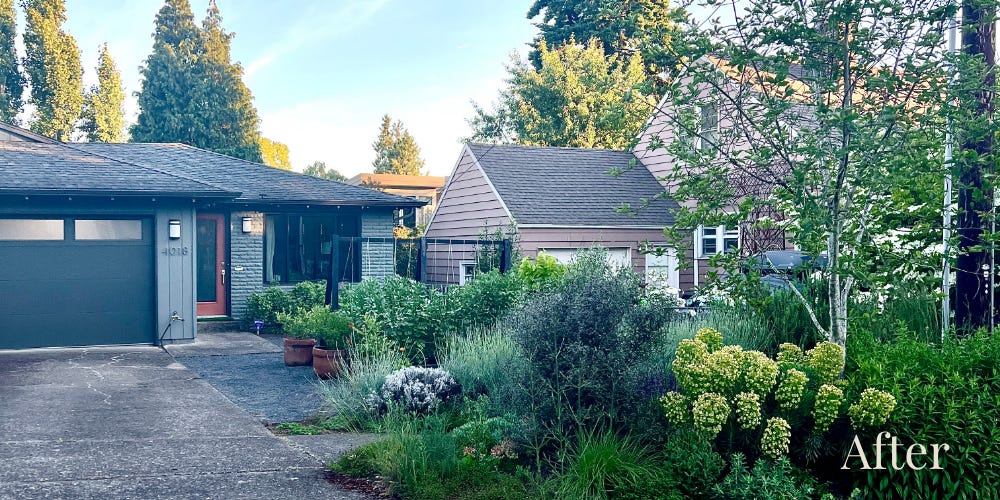




What a lovely tour this morning. Thank you for this ! She has done a marvelous job and so fun to read about her choices.